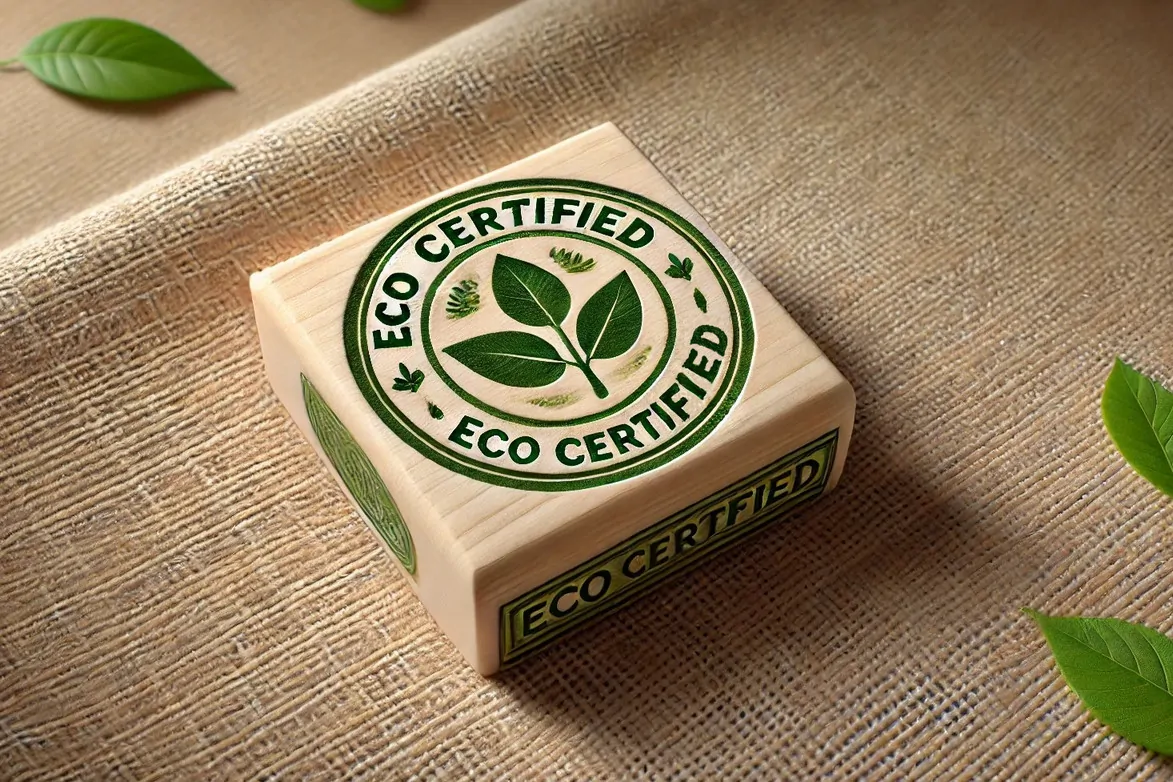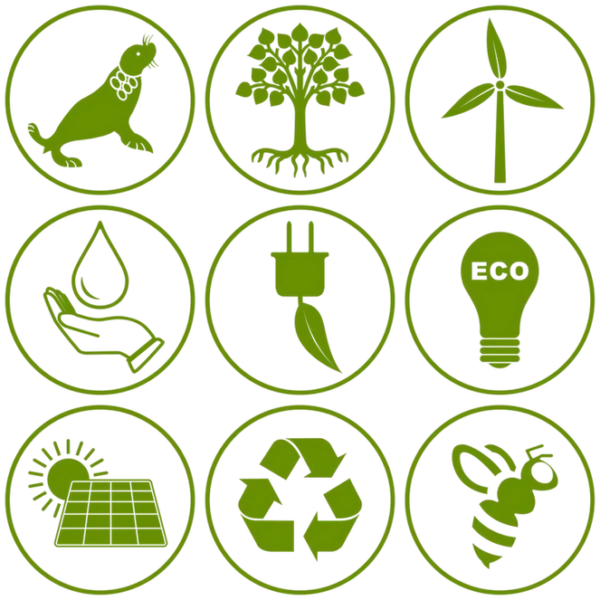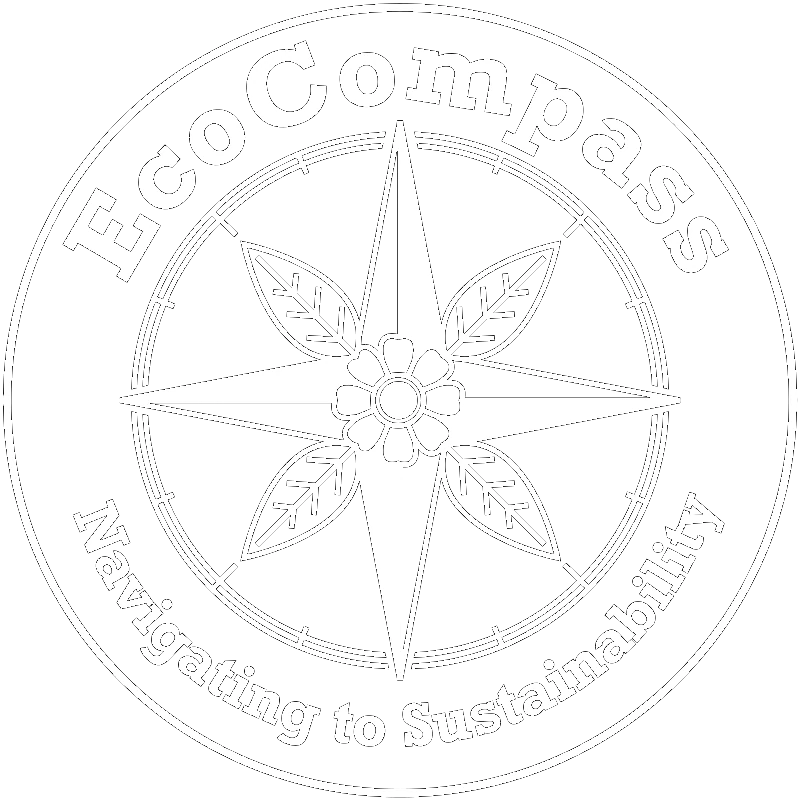
In our previous article on the fundamentals of sustainable shopping, we explored key principles for selecting eco-friendly products. One of the most useful tools that can help consumers make informed choices is eco labels and certifications. These labels serve as a shortcut, eliminating the need for consumers to analyze every product’s production process or environmental footprint—this work has already been done by experts and auditors.
In this article, we will explore what eco labels and certifications are, how they work, and how to navigate them. We will also introduce some of the most recognized global eco-certifications and provide sources for verifying their credibility.
What Are Eco Labels and Environmental Certifications?

An eco label is a visual mark on a product that indicates it meets specific environmental or social criteria. The process of assessing and approving a product, service, or production method by an independent organization is known as environmental certification. While an eco label is the visible outcome of certification, the certification process itself ensures that a product complies with sustainability and environmental standards, making it easier to choose environmentally responsible products.
For producers and retailers, certification also provides added credibility and competitiveness in the market, attracting eco-conscious customers. It helps build a positive brand image, facilitates access to sustainability-driven markets, and can even boost sales and product placement. Given the increasing demand for environmentally friendly products, it’s no surprise that, alongside reputable producers, some less scrupulous actors exploit this trend. That’s why it’s essential to be aware of a few key facts:
- Not all eco labels are certified—some may be mere marketing claims without any real verification. Many brands or retailers use terms like “eco,” “bio,” or “green” on their products or create their own eco labels. While this doesn’t necessarily mean the product doesn’t meet environmental or social criteria, such labeling avoids formal certification, which can be complex and costly. However, without independent verification, consumers must rely on the company’s claims or do their own research.
- Certifications undergo regular audits—credible ones must be verified by independent organizations. Some brands and retailers even create their own certification systems, setting their own criteria for eco labels. While this provides some level of assurance, it still requires consumers to either trust the company or verify claims themselves.
- If a self-declared “eco” label or certification lacks independent validation and misleads consumers about a product’s environmental quality, this is known as greenwashing. We will explore this phenomenon in more detail in a future article.
A global directory of environmental labels, Ecolabelindex.com, provides information on various eco labels. However, it does not conduct certifications, verify products, or provide independent quality assessments. It simply indicates the existence of an eco label.
How to Verify the Credibility of a Certification?

To ensure that an eco label or certification is high-quality, independent, and trustworthy, consider the following criteria:
- Organizations such as ISO (e.g., ISO 14024, which defines requirements for Type I environmental labels approved by independent bodies), the Global Ecolabelling Network (GEN), and environmental agencies like EPA, EU, and UNEP offer databases of trusted eco labels or define certification standards.
- The most reliable certifications come from independent organizations or institutions regulated by official authorities (e.g., EU Ecolabel, Blue Angel, Nordic Swan, FSC, MSC) and internationally recognized labels (e.g., Fairtrade, Cradle to Cradle). Some national or regional labels can also be trustworthy if they are independently verified.
- In contrast, company-created certifications without external oversight require scrutiny—they may be unreliable.
- Trustworthy certifications have clear, publicly available criteria, external audits, measurable environmental benefits (such as lower emissions, reduced resource consumption, or elimination of toxic substances). If a certification does not provide this information, be cautious.
- Databases like Ecolabel Index and evaluations from reputable environmental organizations (e.g., Greenpeace, WWF) are useful resources.
- Media scrutiny—if a certification has been criticized for lacking transparency, it’s best to avoid it.
- Not every “green” claim is trustworthy—watch out for vague statements without specific data, missing audits, and private certifications from large corporations without third-party verification.
How Can Eco Certifications Help Consumers?

PwC, one of the world’s largest consulting and auditing firms, stated in its May 2024 report that more than four-fifths (80%) of consumers are willing to pay more for goods that are produced or sourced sustainably.
Environmental certifications guarantee that a product meets certain standards in areas such as:
- Reduced environmental impact—fewer toxic substances, lower water and energy consumption.
- Health safety—free from harmful chemicals, pesticides, and microplastics.
- Ethical production—fair conditions for workers, biodiversity protection, humane animal treatment.
Eco labels provide a clear and simple way for consumers to identify high-quality, sustainable products without the need for extensive research. Instead of analyzing ingredients and production methods themselves, consumers can rely on certifications that confirm experts have already done the work.
Top Global Eco Certifications
There are hundreds of eco labels and certifications, but not all are equally recognized or credible. Here are some of the most reputable global certifications covering various product categories:
EU Ecolabel
The official environmental label of the European Union, the EU Ecolabel, identifies products and services with a low environmental impact. It evaluates the entire life cycle of a product—from raw material sourcing, energy and water consumption during production, and the use of toxic or hazardous substances, to its impact on the environment, biodiversity, and ecosystems, as well as waste management and recycling potential.
It is awarded to various product categories and services, including cleaning products, textiles, paper goods, paints, electronics, and tourism services. The EU Ecolabel is supported by the European Commission, and its criteria are regularly updated based on the latest environmental research.
For more information, visit: environment.ec.europa.eu
Nordic Swan Ecolabel
The Nordic Swan Ecolabel is the official environmental certification of the Nordic countries, recognized for its strict criteria assessing the environmental impact of products throughout their entire life cycle. It focuses on factors such as chemical and raw material usage, energy consumption during production, recyclability, long-term sustainability, and social and ethical aspects of manufacturing.
Established in 1989 by the Nordic Council of Ministers, it is approved by the governments of Sweden, Norway, Iceland, Denmark, and Finland. The label applies to a wide range of products and services, including cleaning products, food, furniture, hotel services, and paper.
With rigorous standards and regular audits (typically every 3-4 years), the Nordic Swan Ecolabel is managed by government agencies in the Nordic countries, ensuring credibility and transparency.
For more information, visit: www.nordic-swan-ecolabel.org
Green Seal
Green Seal is an independent environmental certification from the USA, primarily focused on the North American market. It evaluates the sustainability of products and services based on key factors such as the use of toxic substances, greenhouse gas emissions, impact on water resources, energy efficiency, and safety for both people and ecosystems.
Originally created as a certification for environmentally friendly paper products, Green Seal has since expanded its scope to include a wide range of products such as cleaning supplies, paints, paper, consumer goods, and even hospitality services.
Operating since 1989, Green Seal sets science-based standards, and all certified products must undergo an independent audit.
For more information, visit: greenseal.org
Fairtrade
Fairtrade is an international certification that assesses and guarantees ethical working conditions for disadvantaged farmers and producers in developing countries. It primarily focuses on fair wages and prices for farmers and workers, creating opportunities for marginalized producers—especially women and indigenous communities—investing in local communities, banning child and forced labor, and promoting social justice, environmentally responsible practices, and economic security. It also supports biodiversity protection and reduces pesticide use.
Fairtrade certification is most commonly applied to agricultural products such as coffee, cocoa, tea, bananas, sugar, cotton, wine, and more. The certification process is carried out by FLOCERT, an independent inspection body. Fairtrade is supported by numerous nonprofit organizations and regulated by international standards.
For more information, visit: fairtrade.net
Blue Angel (Blaue Engel)
The world’s oldest environmental certification, originating from Germany. It evaluates key criteria such as low emissions and reduced chemical use, energy efficiency, recyclable or eco-friendly materials, and minimizing noise and health impacts. The standards are regularly updated to reflect the latest technological advancements.
The certification covers a wide range of products—from paper and furniture to paints, coatings, electronics, and cleaning supplies. It is officially backed by the German Federal Ministry for the Environment, with audits conducted by the Independent Environmental Agency (Umweltbundesamt).
For more information, visit: https://www.blauer-engel.de/en
Cradle to Cradle (C2C)
Cradle to Cradle (C2C) is a certification framework that evaluates the sustainability of products based on their entire life cycle – from production and use to material reuse. All products, buildings, and services are designed according to the principles of a potentially infinite circular economy. This means they are created to be either composted after use or placed into closed technical loops for reuse.
The C2C certification has five levels: Basic, Bronze, Silver, Gold, and Platinum. It assesses the use of safe and recyclable materials, waste minimization, support for the circular economy, efficient water and energy use, as well as ethical labor conditions and social impact.
This certification applies to a wide range of products, including textiles, building materials, electronics, packaging, furniture, and household goods.
For more information, visit: c2ccertified.org.
What Does This Mean for You?

Eco certifications are essential tools for those seeking a more sustainable lifestyle. They allow consumers to make informed decisions without analyzing every detail of the production process. Reliable eco labels guarantee transparency and accountability, protecting both the environment and ethical values.
However, don’t be misled by false marketing claims. As with anything, a degree of caution is needed—prioritize trustworthy and well-verified eco labels. If you come across an unfamiliar certification, don’t dismiss it outright—research it first.
In future articles, we will explore certifications for specific product categories (e.g., food, forestry and fisheries, clothing, cosmetics, electronics). Stay tuned to EcoCompass for more insights into sustainable shopping!
